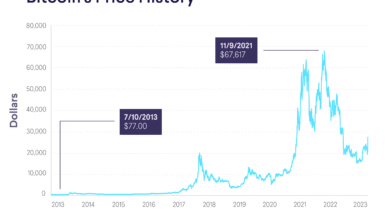Stablecoins Set to Facilitate $1 Trillion Payments by 2030

Stablecoins are rapidly emerging as a transformative force within the financial landscape, poised to revolutionize global payments and shape the future of cryptocurrency. With projections indicating that stablecoin payments could reach a staggering $1 trillion per year by 2030, their impact on the financial infrastructure is undeniable. This growth is closely tied to the burgeoning DeFi growth, where innovative decentralized finance systems enhance capital efficiency and redefine traditional banking norms. As stablecoins bridge the gap between digital currencies and fiat, they present a compelling solution for international transactions and everyday consumer payments. The rise of stablecoins signals not just a shift in how payments are processed but also the introduction of a new economic paradigm that facilitates seamless global payments, ultimately benefiting businesses and consumers alike.
In recent years, digital currencies backed by stable assets, often referred to as currency-pegged tokens, have gained significant traction in the financial sector. These assets serve as a vital component of the evolving landscape of fintech, where they facilitate efficient cross-border transactions without the volatility commonly associated with cryptocurrencies. As decentralized finance (DeFi) continues to expand, these currency-pegged solutions are becoming essential for smooth and reliable payments across various platforms. With the potential to reshape the operational dynamics of global finance, these instruments not only enhance liquidity and foster innovation but also contribute to a more resilient financial infrastructure. The landscape is rapidly transforming, as conventional payment methods struggle to keep pace with the benefits offered by these advanced monetary systems.
The Rise of Stablecoins in Global Payments
Stablecoins are rapidly gaining traction as a critical component of the global payments landscape. As outlined in the recent report by Keyrock and Bitso, the projected facilitation of $1 trillion in annual payments by 2030 underscores the significant role these digital currencies are beginning to play. With traditional payment systems struggling to keep pace with the demands of an increasingly digital economy, stablecoins present a viable alternative that promises not only efficiency but also enhanced transaction security. The ability of stablecoins to maintain a stable value relative to fiat currencies mitigates the volatility typically associated with cryptocurrencies, making them attractive for a variety of financial applications.
As the utilization of stablecoin payments expands, we are likely to witness a transformation in how businesses and consumers engage in transactions worldwide. This growth is directly linked to the evolution of decentralized finance (DeFi) platforms that leverage blockchain technology to streamline payments and reduce costs. By providing just-in-time liquidity and programmability, stablecoins can lower the barriers to efficient cross-border transactions, ensuring that value can move seamlessly across borders without the cumbersome delays that often plague traditional banking systems.
Frequently Asked Questions
What are stablecoins and how do they facilitate global payments?
Stablecoins are cryptocurrencies designed to maintain a stable value by pegging them to an underlying asset, such as fiat currencies. They facilitate global payments by providing a reliable and efficient means of transferring value across borders, significantly reducing transaction costs and times compared to traditional financial systems.
How will stablecoin payments impact DeFi growth by 2030?
Stablecoin payments are expected to propel DeFi growth by providing essential liquidity and enabling innovative financial products. With projections of stablecoin payments reaching $1 trillion annually by 2030, DeFi platforms will benefit from improved capital efficiency and faster transaction speeds, further integrating cryptocurrencies into everyday financial transactions.
What role do stablecoins play in the evolving financial infrastructure?
Stablecoins play a crucial role in evolving financial infrastructure as they offer a scalable solution for payments that traditional systems struggle to accommodate. By enhancing liquidity and enabling programmable transactions, stablecoins can unlock vast amounts of capital, streamline cross-border payments, and create a more inclusive financial ecosystem.
Why are stablecoins important for the future of cryptocurrency?
Stablecoins are important for the future of cryptocurrency because they bridge the gap between traditional finance and digital assets. By providing price stability and facilitating secure transactions, they help attract mainstream users and businesses to embrace cryptocurrency, thus expanding the overall market and increasing adoption.
How can businesses benefit from using stablecoin payments?
Businesses can benefit from using stablecoin payments through lower transaction fees, rapid processing times, and reduced currency volatility. Implementing stablecoins can streamline international transactions, enhance cash flow management, and provide competitive advantages in an increasingly digital economy.
What are the advantages of using stablecoins in DeFi applications?
The advantages of using stablecoins in DeFi applications include increased capital efficiency, lower borrowing costs, and the ability to engage in higher transaction volumes without the risk of price fluctuations. Stablecoins enable seamless integration of financial services in DeFi, allowing users to maximize their earning potential while minimizing risks.
What trends indicate the rise of stablecoins in the financial market?
Trends indicating the rise of stablecoins include their growing share in the U.S. money supply, which has increased from 0.04% in 2020 to over 1%, and projections suggesting they could reach 10% by 2030. Additionally, stability in value and wide adoption for both consumer and business payments signal their growing influence in the global financial landscape.
How do stablecoins compare with traditional payment systems?
Stablecoins offer significant advantages over traditional payment systems, including faster transaction speeds, lower fees, and enhanced accessibility to unbanked populations. Unlike traditional systems that often require intermediaries, stablecoin transactions are executed on decentralized networks, leading to increased transparency and efficiency.
Will stablecoins influence monetary policy and regulatory frameworks?
Yes, stablecoins are expected to influence monetary policy and regulatory frameworks significantly. As their market capitalization grows, stablecoins could impact the Treasury bill market and subsequently affect Federal Reserve policies. This emerging financial landscape will likely prompt regulators to create new frameworks to manage the risks and benefits associated with stablecoins.
How do stablecoins facilitate just-in-time liquidity in businesses?
Stablecoins facilitate just-in-time liquidity by providing immediate access to funds without the need for prefunding accounts in multiple regions. This ability allows businesses to move capital quickly and efficiently, reducing the amount of money tied up in traditional banking systems and improving overall operational cash flow.
| Key Point | Details |
|---|---|
| Projected Payment Volume | Stablecoins are expected to facilitate $1 trillion annually by 2030. |
| Cross-Border Transactions | Predicted to handle 12% of all cross-border transactions, up from less than 3% in 2024. |
| Capital Efficiency via DeFi | DeFi systems achieve average capital turnover of 11x monthly, unlike traditional fintechs which average 1–2x annually. |
| Impact on U.S. Monetary Policy | With a supply of $2 trillion, stablecoins may hold up to 25% of the Treasury bill market, influencing Fed policy. |
| Market Growth Trends | Stablecoin share of U.S. M2 money supply increased from 0.04% in 2020 to over 1%, projected to reach 10% by 2030. |
Summary
Stablecoins are increasingly pivotal in reshaping the financial landscape, with projections indicating they will facilitate transactions exceeding $1 trillion annually by 2030. This transformative power stems from their ability to enhance capital efficiency and provide real-time liquidity, positioning stablecoins as a cornerstone of future payment systems. Their growing influence on cross-border transactions and U.S. monetary policy underscores the seismic shifts occurring within the global economy, reinforcing the necessity for regulatory frameworks to adapt to this innovative financial instrument.




